Since UConn cut down the nets at the men’s Final Four in Houston in April, there’s been a good deal of change in the sport.
Rick Pitino is back in the Big East, a league he first graced as an up-and-coming head coach 38 years ago. Thanks to an NCAA rule change, players can now wear any number they want on their jerseys from 0 to 99. The USC roster now includes a 6-foot-4 first-year guard with a rather storied name. Hunter Dickinson spent the offseason being hailed as “the best transfer of the portal era.” He was named a first-team preseason All-American as a member of the AP poll’s No. 1 team (see below). It was a nice offseason for him.
Now comes the basketball. Before the 2023-24 season officially tips off, we’re forecasting the highest feasible highs and the lowest possible lows for each team in the AP preseason Top 25.
If we learned anything from the 2022-23 preseason No. 1 — North Carolina — missing the NCAA tournament entirely, it’s that surprises do happen. Here’s one sketch of what’s possible for the nation’s top 25 teams.
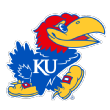
Best case: Everything works out just like you’d expect from a reigning Big 12 champion with three returning starters and the nation’s top transfer. A veteran rotation headlined by Dickinson (newly arrived from Michigan), Dajuan Harris Jr., Kevin McCullar Jr. and K.J. Adams Jr. proves that age is a valuable asset in the portal era. Dickinson, Harris and McCullar will all be 23 come tournament time.
Worst case: The 3s don’t fall. KU’s returning players made a total of 67 treys last season. Then again, Towson transfer Nicolas Timberlake (who, speaking of age, is 25) is a career 38% 3-point shooter on five attempts per outing. During a three-game swing in Puerto Rico in August, the Jayhawks drained 13 3s in their first game, only to shoot 11 of 43 beyond the arc over their last two contests.

Best case: Kyle Filipowski receives the expected sophomore boost in accuracy and starts hitting 3s left and right. Jeremy Roach joins Filipowski on the All-ACC first team, becoming the first Duke senior to earn the honor since Mason Plumlee. Tyrese Proctor, Mark Mitchell and Jared McCain contribute additional starring moments. The Blue Devils’ rim defense continues to be both underrated and very good.
Worst case: Returning four starters doesn’t move the needle much on Duke’s so-so shooting. This offense’s best play call is still a missed shot (because, granted, the offensive rebounding is still excellent). Turnovers crop up as an occasional issue as they did in the Blue Devils’ 13-point loss to Tennessee in the 2023 round of 32.

Best case: Zach Edey is again the most dominant performer in Division I. He becomes the first player to earn back-to-back Wooden Awards since Ralph Sampson. Fletcher Loyer improves on last season’s 33% 3-point shooting significantly and creates even more room in the paint for Edey. Purdue repeats the Virginia sequence from five years ago and wins it all one season after losing to a No. 16 seed in the NCAA tournament. People stop yelling about the Big Ten’s title drought and start yelling about something else.
Worst case: The Boilermakers again post an unsightly turnover rate and are still prone to mishaps against pressure defenses. Matt Painter has demonstrated beyond a doubt that running the offense to a great extent through one scorer who never shoots 3s can still win a Big Ten title. Can it work again in this postseason?

Best case: With five of the top six scorers returning from a Sweet 16 team, MSU takes the next big step forward. Preseason first-team All-Big Ten selections Tyson Walker and A.J. Hoggard put tremendous stress on opposing defenses with their 3s, assists and trips to the line. Speaking of 3s, Jaden Akins also returns, and the Spartans don’t miss a beat on the perimeter, despite losing Joey Hauser. Xavier Booker makes a highly impressive debut.
Worst case: Michigan State’s good fortune runs out and the Big Ten shoots much, much better than 31% on its 3s against this defense. Despite very good rate stats for Booker, Tom Izzo keeps talking about patience and learning while being stingy with his minutes.

Best case: Tyler Kolek wins back-to-back outright Big East player of the year awards. (That’s never been done in a Big East with a rich history of shared POY honors. Chris Mullin won three times, two of which were shared.) David Joplin and Kam Jones keep on making 3s. Oso Ighodaro extends his trademark high efficiency on offense, only this time at a much more robust usage rate. Shaka Smart’s offense again lights up the Big East at a rate of 1.15 points per possession or higher.
Worst case: The defense is average, and opponents don’t have too much difficulty making 2s. For a second consecutive season, the Big East outscores Marquette by a hair on each “effective” (turnover-less) possession. This time, relying so heavily on turnover margin catches up to MU.

Best case: The Huskies give Division I men’s hoops its first successful title defense since Florida pulled off that feat in 2006 and 2007. Tristen Newton, Alex Karaban and Rutgers transfer Cam Spencer provide UConn with the leadership to carry on despite losing three starters. Potential 2024 lottery pick Stephon Castle lives up to the billing and shows poise beyond his years as a scoring wing. Donovan Clingan follows the Zach Edey playbook and proves that a onetime reserve really can extend his amazing stats over many more minutes as a starter.
Worst case: Losing first-team All-Big East performers Adama Sanogo and Jordan Hawkins plus an NBA-caliber competitor like Andre Jackson Jr. proves too much to overcome. The next-generation Huskies look less like the team that stormed to the 2023 NCAA title and more like the one that started Big East play 8-7 last season.
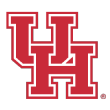
Best case: Houston reaches its second Final Four in four years (not to mention its fourth consecutive Sweet 16). This comes after outworking the Jayhawks for the league title and capturing a Big 12 championship in its first season as a member. Baylor transfer LJ Cryer has played against these teams for three seasons and steps in effectively as the Cougars’ leading scorer. Jamal Shead again provides a steady hand and distributes the ball skillfully. Temple transfer Damian Dunn adds scoring. J’Wan Roberts is yet again tenacious on the offensive glass.
Worst case: Kelvin Sampson’s team takes a year to regroup. In addition to saying goodbye to Marcus Sasser, the Cougars also lost Jarace Walker and Tramon Mark. The departures leave a fair amount of scoring to be replaced and, no less, a modicum of rebounding to be backfilled.
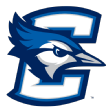
Best case: After coming within one basket of the 2023 Final Four, Creighton writes its own redemption story and reaches the national semifinals for the first time in program history. Reigning Big East defensive player of the year Ryan Kalkbrenner stakes his claim as a high-volume paint scorer par excellence, once again converting six 2s per outing at a 72% success rate. Trey Alexander and Baylor Scheierman combine for another season of at least 150 makes from beyond the arc. The Bluejays again allow the fewest points per possession in Big East play.
Worst case: After watching Ryan Nembhard and Arthur Kaluma transfer out to Gonzaga and Kansas State, respectively, Creighton takes a step back. Losing your team leader in assists and your best offensive rebounder proves to be more of a challenge than anticipated.

Best case. Zakai Zeigler returns 100 percent healthy from his ACL injury. Josiah-Jordan James stays healthy the entire season, locks down the defensive glass and records a career-high scoring average. Helped along by a deep tournament run in his fifth season, Santiago Vescovi drains his 400th career 3 and joins an exclusive club that includes Max Abmas, Markus Howard, Stephen Curry and JJ Redick. Tennessee’s defense is once again statistically amazing.
Worst case: Tennessee’s offense is not statistically amazing, just as it was not when the Vols ended their 2022-23 campaign by putting 55 points on the board in 58 possessions against Florida Atlantic.

Best case: The Owls prove the doubters wrong. Those doubters were kidding themselves by looking askance at a Final Four team returning all five starters. Johnell Davis is still one of the best all-around basketball players in the game. Alijah Martin still scores from both sides of the arc in a way few players listed at 6-foot-2 can match. The Owls still force misses in the paint, only as of this season they’re doing it in the American Athletic Conference instead of Conference USA.
Worst case: The doubters get one right in the smallest imaginable sense. The 2023 run was one for the ages, and possibly this time the one-possession game in the round of 64 doesn’t go FAU’s way. Then again, in a larger sense, the doubters were ready to pounce so long as Florida Atlantic did not make consecutive Final Fours. Seems a bit unreasonable.

Best case: It’s a new day in Spokane, Washington, and the Bulldogs make the most of it. Anton Watson finally gets his shot at the spotlight and proves that his career 65% 2-point shooting is no accident. The last time we saw Wyoming transfer Graham Ike, he was being named the 2022-23 preseason Mountain West player of the year before being sidelined by an injury. A healthy Ike thrives on a steady stream of assists dished by Creighton transfer Ryan Nembhard. Nolan Hickman shoulders a heavier load on offense and carries it off with ease.
Worst case: Gonzaga performs about like one would expect from a group that lost to the eventual national champions by 28 then said goodbye to three starters. The defense, in particular, is questionable for a second season in a row.

Best case: Defenses cannot stop this team. North Carolina transfer Caleb Love has a career year in Tucson. Oumar Ballo and Pelle Larsson combine for 60%-plus shooting inside the arc at a high volume. Kylan Boswell is a force to be reckoned with as a sophomore at the ripe old age of 18. Arizona again plays at easily the fastest pace in the league and once again ranks at the top for points per possession in Pac-12 play; Tommy Lloyd keeps his streak alive at three years and counting on both metrics.
Worst case: The Wildcats just lost too much with Azuolas Tubelis, Kerr Kriisa and Courtney Ramey all departing from a team that fell to Princeton in the round of 64.

Best case: Jim Larrañaga really has unlocked the secret to getting consistently great looks. The Hurricanes repeat as the most accurate shooting team in ACC play. Nijel Pack lives up to his career 42% success rate from beyond the arc, this time at a higher volume than ever. Norchad Omier continues to outwork and outperform much larger opponents in the paint.
Worst case: The laptops were right: No. 13 was too high for a rotation that lost its two leading scorers (Isaiah Wong and Jordan Miller). Opponents draw Omier away from the basket and attack the interior with good results.
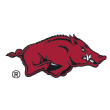
Best case: Trevon Brazile makes a full recovery from the knee injury he sustained in December and delivers on the promise that earned him a slot on the 2023-24 preseason All-SEC first team. Davonte Davis continues the 41% 3-point shooting he displayed during SEC play last season. Transfers Khalif Battle (Temple), Tramon Mark (Houston) and El Ellis (Louisville) all hit the ground running. Arkansas reaches a fourth consecutive Sweet 16.
Worst case: The close-game bounces start going the other way in the postseason. (Under Eric Musselman, the Razorbacks are 8-1 in SEC and NCAA tournament games decided by six points or less.)
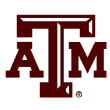
Best case: Wade Taylor IV leads the SEC in scoring and, better still, shoots 40% on his 3s (and 90% at the line) while doing so. Tyrece Radford attempts more than 200 free throws and, better still, converts 80% of his tries while doing so. With five of the top six scorers returning from a team that earned a No. 7 seed, Texas A&M reaches the second weekend of the tournament for the first time in six years.
Worst case: The Aggies’ willingness to live with a high number of opponent 3-point attempts comes back to bite them. The SEC launched 46% of its shots from beyond the arc against this D last season. From one angle, it looks like three-dimensional chess from Buzz Williams (as the SEC was the worst 3-point shooting conference in the nation), but it is, if nothing else, a high-stakes style to play.
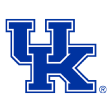
Best case: Justin Edwards pushes Taylor for SEC player of the year and wins the league’s rookie of the year honors in a walk. West Virginia transfer Tre Mitchell adds scoring from both sides of the arc, rebounding and experience to an otherwise young rotation. D.J. Wagner takes his place as the latest in a very long line of youthful but highly effective Kentucky guards. Antonio Reeves fills a crucial role and leads the Wildcats in made 3s for a second season running. Aaron Bradshaw recovers fully from a foot injury and defends the rim.
Worst case: The blend of experience (Mitchell and Reeves) and players in their first season of Division I (much of the rest of the rotation) doesn’t jell. Kentucky also faces headwinds on both offense and defense now that Oscar Tshiebwe is gone and unbelievable rebounding is not a given.

Best case: Another season, another amazing defense at San Diego State. Darrion Trammell, Lamont Butler, Micah Parrish and Jaedon LeDee know the drill. USC transfer Reese Dixon-Waters has been around a few elite defenses in his own right. Including their run to the 2023 national title game, the Aztecs are 108-23 over the past four seasons. History suggests more of the same.
Worst case: Nathan Mensah was a really important part of that great 2022-23 defense, and his departure leaves a big hole.

Best case: Max Abmas brings his high-scoring ways to the big stage and pushes Hunter Dickinson all season long for Big 12 player of the year honors. Tyrese Hunter improves his 3-point accuracy for a second consecutive season. Dillon Mitchell shows why he was ranked higher than Brandon Miller and Gradey Dick in the recruiting class of 2022.
Worst case: Following up on success proves more difficult than expected. The “transfer superteam” model worked like a charm last season, to the tune of a Big 12 tournament title and an Elite Eight run. Can those players come together for a second season in a row? Will an undersized backcourt be a liability on D?
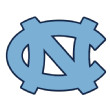
Best case: Armando Bacot posts 20-plus double-doubles. RJ Davis picks up where he left off last season (averaging 19 points over his last five outings). Stanford transfer Harrison Ingram adds production and deft passing from the wing. Notre Dame transfer Cormac Ryan is a plug-and-play 3-point threat. Elliot Cadeau scores more points than any North Carolina first-year recruit since Cole Anthony.
Worst case: Last season’s problems didn’t go anywhere. The least accurate team in ACC play by a wide margin in 2023 still can’t make shots in 2024. Opponents again collapse on the paint and take their chances with the Tar Heels’ perimeter scorers. Those same opponents hardly ever commit turnovers.

Best case: First-year standout Ja’Kobe Walter makes sweet scoring music with Jalen Bridges and Toledo transfer RayJ Dennis. Langston Love and VCU transfer Jayden Nunn add experienced depth to a rotation long on talent at shooting guard and on the wing. For a second consecutive season, Scott Drew’s group posts far and away the best number for points per possession in Big 12 play.
Worst case: The interior defense remains a liability. Last season, the Big 12 ate Baylor alive in the paint and connected on 57% of its 2s. Mark Vital, where have you gone?

Best case: In a wide-open race, Isaiah Collier scoops up Pac-12 player of the year honors before hearing his name called in the 2024 NBA lottery. Some of Collier’s closest competition for the league award comes from teammate Boogie Ellis. Joshua Morgan and Vincent Iwuchukwu make certain that opponents rarely get a clean look at the rim. Until Bronny James either is or is not given a clean bill of health to play in the 2023-24 season, he is gracious and optimistic while fielding occasional inquiries made by the media.
Worst case: The Trojans again get surprisingly little bottom-line benefit from forcing so many misses in the paint. This time, the weak defensive rebounding costs USC.

Best case: Experience turns out to be everything in 2024, and the team with the most seniors and graduate students wins. That bodes well for a Villanova rotation with Justin Moore, Eric Dixon, Hakim Hart, TJ Bamba, Tyler Burton and Chris Arcidiacono. All of the above get together and figure out a way to shoot better than the 33% they posted from beyond the arc last season.
Worst case: Shooting continues to be an issue. When the shots don’t fall, there’s not much in the way of a Plan B for a group that plays good but not great D and that posted the second-lowest shot volume in Big East play last season.

Best case: The Gaels know how to make life miserable for opposing offenses. A slower pace helps to set the proper tone and so does good work on the defensive boards. Then Aidan Mahaney, Mitchell Saxen and Alex Ducas swoop in and work methodically for the best look at the other end. Saint Mary’s once again rates out as the best defense in the West Coast Conference by a wide margin.
Worst case: It turns out the loss of leading scorer Logan Johnson did no particular favors for this offense, even though SMC relies primarily on shot volume rather than accuracy. Johnson was also the team’s leader in assists.
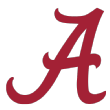
Best case: This team thrives despite losing Brandon Miller (now with the Charlotte Hornets) and Jahvon Quinerly (transferred to Memphis). Mark Sears follows up on the team-high 16 points he recorded in a losing cause against San Diego State in the Sweet 16 and becomes a reliable featured scorer. North Dakota State transfer Grant Nelson shows the experts were correct to tap him as a preseason All-SEC first-team selection. Hofstra transfer and reigning CAA player of the year Aaron Estrada brings his brand of high-scoring ball to the SEC.
Worst case: This team really misses Miller. Last season, the Crimson Tide played at a markedly faster pace than the rest of the league, attempted a metric ton of 3s and recorded plenty of makes at the rim. It turns out all of the above works better when keyed by an NBA star in the making.

Best case: Terrence Shannon Jr. runs behind Zach Edey as a close second for Big Ten player of the year. The hoops gods give Coleman Hawkins an A for effort, and the senior catches fire from the perimeter. Transfers Marcus Domask (Southern Illinois), Quincy Guerrier (Oregon) and Justin Harmon (Utah Valley) exceed all expectations. Dain Dainja bids farewell to foul trouble and wreaks untrammeled havoc in the paint. First-year recruit Amani Hansberry shines.
Worst case: The postseason futility continues. Since the moment Illinois captured the league’s automatic bid in 2021, the Illini are a combined 2-5 in the Big Ten and NCAA tournaments.
